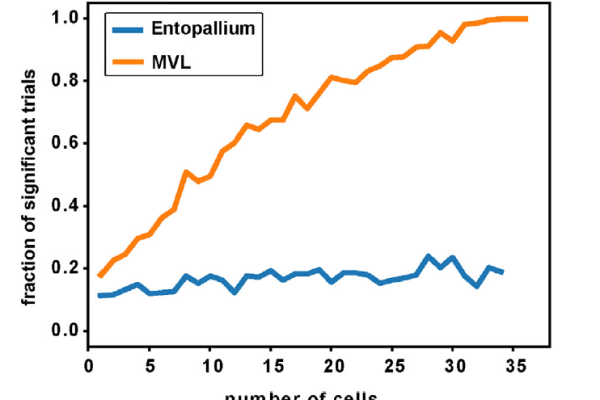2018-06-06

The world surrounding us offers an endless variety of scenes and objects. But just by looking around we effortlessly categorize them in categories like furniture, people, etc. in a blink of an eye. How is this possible? To approach this question, biopsychologists and theoretical neuroscientists from Bochum confronted pigeons with a large number of photographs of objects (vegetables, animals, household items, human faces, etc.), while recording from neurons at different hierarchies of their visual system. Using a linear classifier, the scientists found that the population activity in the primary visual entopallium did not code for any category within these pictures. The higher visual associative area MVL, however, distinguished easily between animate and inanimate objects. Even just about 30 MVL-neurons were sufficient to disambiguate between these categories. It is important to note that such a categorization was not required by the pigeons but emerged by itself from the population code. It seems that visual stimuli are processed along the visual pathways in a hierarchical manner. With every stage in the hierarchy, neurons respond selectively to more complex features, transforming the population representation of the stimuli and making it easy to read-out category information in higher visual areas.

The world surrounding us offers an endless variety of scenes and objects. But just by looking around we effortlessly categorize them in categories like furniture, people, etc. in a blink of an eye. How is this possible? To approach this question, biopsychologists and theoretical neuroscientists from Bochum confronted pigeons with a large number of photographs of objects (vegetables, animals, household items, human faces, etc.), while recording from neurons at different hierarchies of their visual system. Using a linear classifier, the scientists found that the population activity in the primary visual entopallium did not code for any category within these pictures. The higher visual associative area MVL, however, distinguished easily between animate and inanimate objects. Even just about 30 MVL-neurons were sufficient to disambiguate between these categories. It is important to note that such a categorization was not required by the pigeons but emerged by itself from the population code. It seems that visual stimuli are processed along the visual pathways in a hierarchical manner. With every stage in the hierarchy, neurons respond selectively to more complex features, transforming the population representation of the stimuli and making it easy to read-out category information in higher visual areas.